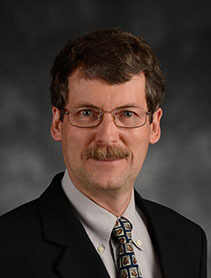
Johan Liebens, PhD
University of West Florida
Department Chair
Expertise:
Earth ScienceEarth Science
Dr. Johan Liebens studies soil and sediment pollution to characterize the origin, level and spatial distribution of the pollution. His projects include examining the effects of high-intensity grazing on soil quality indicators and seeking ways to develop stream bank erosion prediction curves for Northwest Florida. Liebens is a Professor in the Department of Earth and Environmental Sciences. He has a Ph.D. in Geography from Michigan State University, and a Master’s degree in Quaternary Geology and a Bachelor’s degree in Geography, both from Free University Brussels, Belgium. A UWF faculty member since 1996, Liebens has received university-wide awards for his teaching (2000) and his research (2012). He has published findings on soil organic carbon stocks, debris flows, environmental forensics and soil and sediment pollution. In his research Liebens often uses GIS-based spatial analyses, surveying and physical and chemical analyses of soil and sediment samples. He also is experienced in geomorphological and geological field mapping. Among the groups which have funded his work are: National Science Foundation, U.S. Department of Agriculture, Environmental Protection Agency and Florida Center for Solid and Hazardous Waste Management. Articles by Liebens have appeared in Environmental Forensics, Environmental Geology, Environmental Practice, Geomorphology, Water Air and Soil Pollution, Soil and Sediment Contamination, Communications in Soil Science and Plant Analysis, and Soil Use and Management. Degrees & Institutions: Ph.D. Geography, Michigan State University M.S. Quaternary Geology, Vrije Universiteit Brussel, Belgium B.S. Geography, Vrije Universiteit Brussel, Belgium Research: I am a broad-based physical geographer with research interests in environmental soil science and geomorphology. I study soil and sediment pollution to characterize the origin, level and spatial distribution of the pollution. Most recently I have assessed organic and inorganic pollution of surface soils, estuarine sediments, and stormwater retention ponds. Currently, I have a project that seeks to develop streambank erosion prediction curves for the Florida Panhandle. I also have publications on soil organic carbon stocks, debris flows, and surveying methods. GIS-based spatial analyses are part of most of my research, as are surveying and physical and chemical analyses of soil and sediment samples. Earlier in my career I gained valuable experience with geomorphological and geological field mapping. I have international university-level teaching experience and have presented my research results at national and international conferences. My research has been funded, among others, by NSF, GSA, USDA, EPA, and Florida Center for Solid and Hazardous Waste Management. I have published in Environmental Forensics, Environmental Geology, Environmental Practice, Geomorphology, Water Air and Soil Pollution, Soil and Sediment Contamination, Communications in Soil Science and Plant Analysis, and Soil Use and Management. At the University of West Florida I have received university-wide teaching (2000) and research (2012) awards.
No Research/Citations
No Pitches / Articles Found
No Quotes
Available for logged-in users onlyLogin HereorRegister